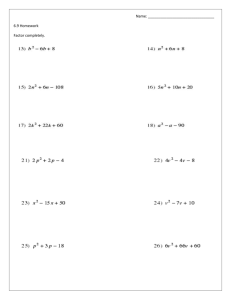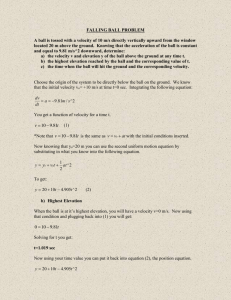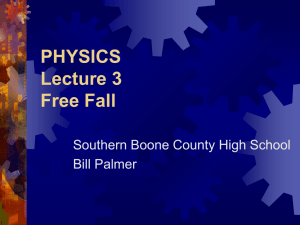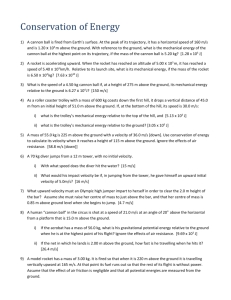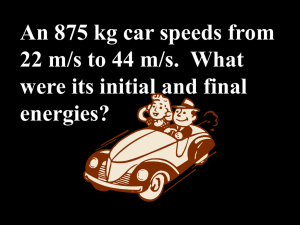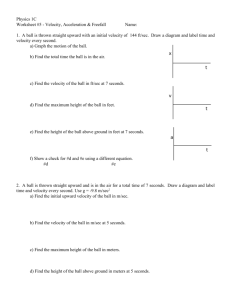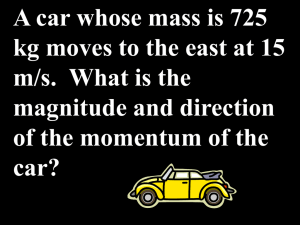Newton's Laws and Motion Homework: Physics Problems
advertisement
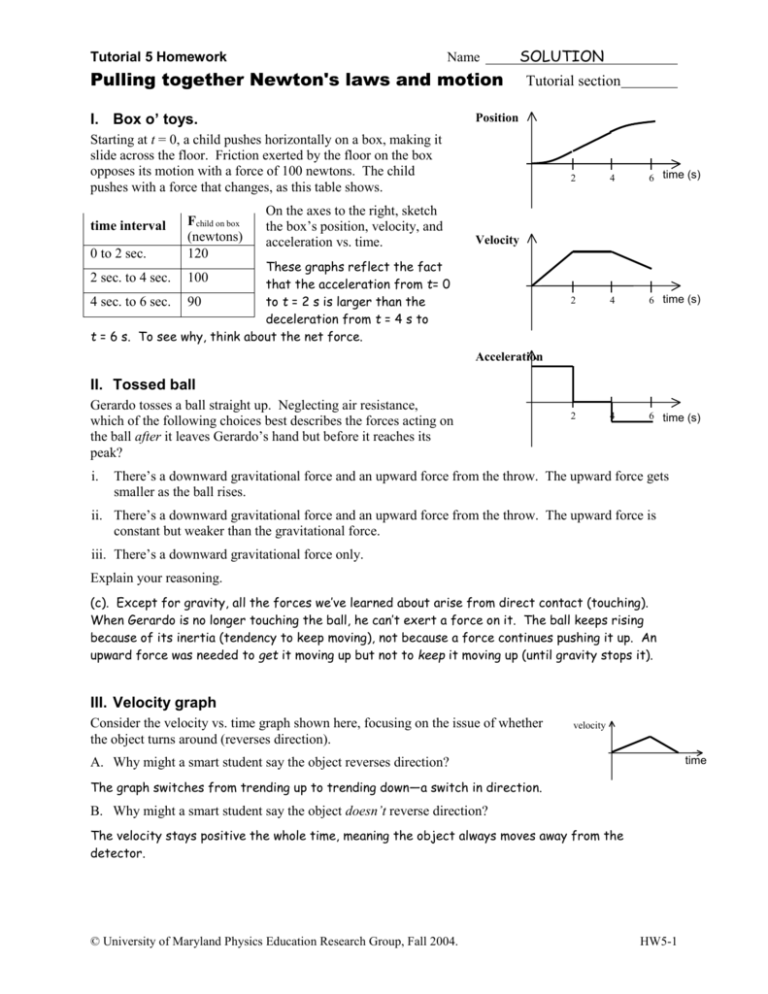
Tutorial 5 Homework Name Pulling together Newton's laws and motion I. Box o’ toys. SOLUTION Tutorial section Position Starting at t = 0, a child pushes horizontally on a box, making it slide across the floor. Friction exerted by the floor on the box opposes its motion with a force of 100 newtons. The child pushes with a force that changes, as this table shows. 0 to 2 sec. Fchild on box (newtons) 120 2 sec. to 4 sec. 100 time interval On the axes to the right, sketch the box’s position, velocity, and acceleration vs. time. 2 4 6 time (s) 2 4 6 time (s) 2 4 6 time (s) Velocity These graphs reflect the fact that the acceleration from t= 0 4 sec. to 6 sec. 90 to t = 2 s is larger than the deceleration from t = 4 s to t = 6 s. To see why, think about the net force. Acceleration II. Tossed ball Gerardo tosses a ball straight up. Neglecting air resistance, which of the following choices best describes the forces acting on the ball after it leaves Gerardo’s hand but before it reaches its peak? i. There’s a downward gravitational force and an upward force from the throw. The upward force gets smaller as the ball rises. ii. There’s a downward gravitational force and an upward force from the throw. The upward force is constant but weaker than the gravitational force. iii. There’s a downward gravitational force only. Explain your reasoning. (c). Except for gravity, all the forces we’ve learned about arise from direct contact (touching). When Gerardo is no longer touching the ball, he can’t exert a force on it. The ball keeps rising because of its inertia (tendency to keep moving), not because a force continues pushing it up. An upward force was needed to get it moving up but not to keep it moving up (until gravity stops it). III. Velocity graph Consider the velocity vs. time graph shown here, focusing on the issue of whether the object turns around (reverses direction). velocity time A. Why might a smart student say the object reverses direction? The graph switches from trending up to trending down—a switch in direction. B. Why might a smart student say the object doesn’t reverse direction? The velocity stays positive the whole time, meaning the object always moves away from the detector. © University of Maryland Physics Education Research Group, Fall 2004. HW5-1 Tutorial 5 Homework Name Pulling together Newton's laws and motion SOLUTION Tutorial section C. Does the object reverse direction? As part of your explanation, explain why the other argument is incorrect, and give advice to someone who made that mistake that can help them understand why they made the mistake and how they can avoid it in the future. Argument B is correct. The object “switches” from speeding up to slowing down, but it keeps moving in the same direction. If this were a position graph, it would indicate a reversal of direction. When someone sees a slope “reversal” on a graph, he or she needs to think carefully about whether the reversal is from speeding up to slowing down (as is the case on a velocity graph) or a reversal in the direction of motion (as is the case on a position graph). D. Sketch a graph of the object’s position vs. time. position time © University of Maryland Physics Education Research Group, Fall 2004. HW5-2


